Is Triclosan Deodorant Bad for You: Separating Facts from Myths
In recent years, there has been increasing scrutiny over the use of triclosan, a common antimicrobial agent found in many personal care products, including deodorants. Triclosan is lauded for its ability to prevent bacterial growth, thereby reducing odor, but concerns have arisen about its safety and environmental impact. With studies highlighting the potential for triclosan to interfere with hormone function and contribute to antibacterial resistance, it's prudent for us to examine the implications of its use in everyday items like deodorant.

The presence of triclosan in deodorants is a matter of both personal health and ecological consideration. While it offers the benefit of reducing underarm bacteria and associated body odor, documented exposure to triclosan, even at low concentrations, can accumulate in our bodies over time. Moreover, when triclosan enters the environment through our wastewater systems, it can contribute to the formation of more harmful compounds, raising questions about the balance between its benefits and potential risks.
Key Takeaways
- Triclosan in deodorants impedes bacterial growth and odor but raises health concerns.
- Regular use of triclosan can lead to bioaccumulation and potential disruption of endocrine functions.
- Environmental implications include the potential transformation of triclosan into toxic substances.
Understanding Triclosan
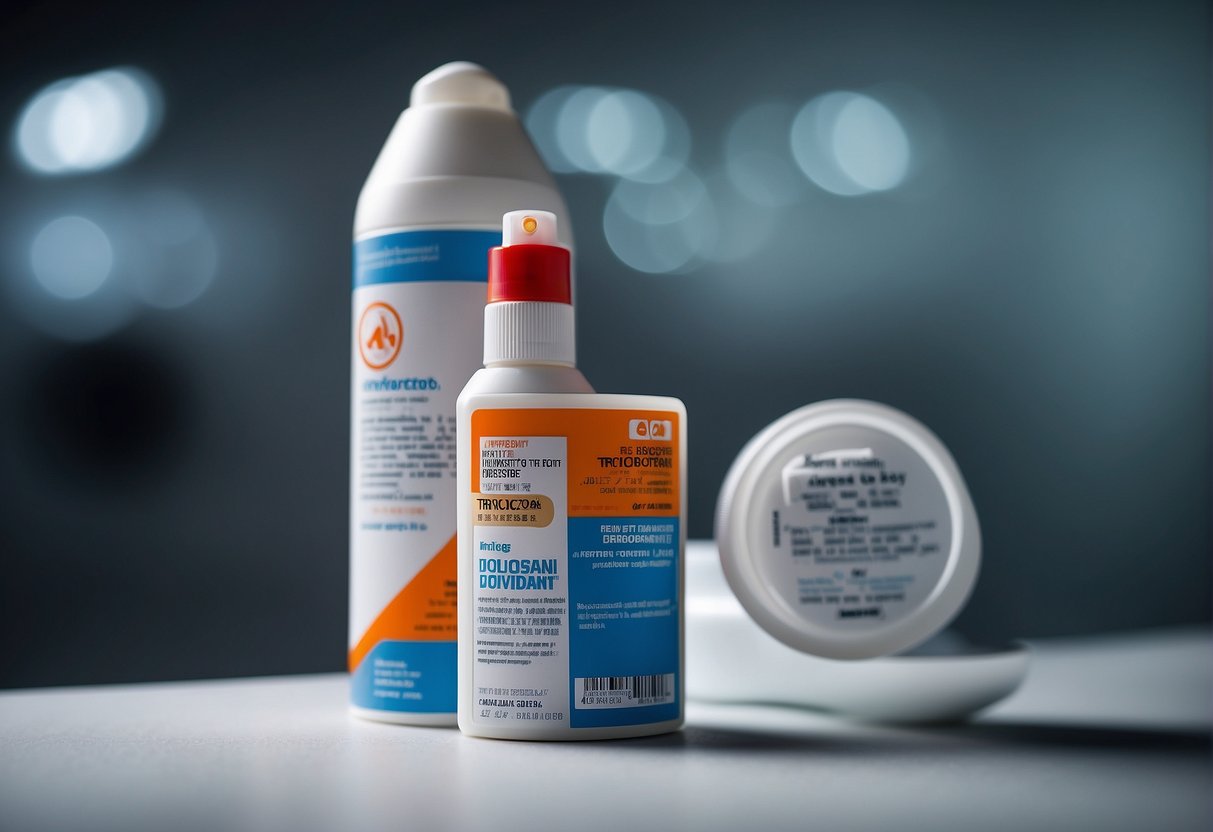
In this section, we discuss the chemical makeup of triclosan and its broad spectrum of uses in various consumer products, with an emphasis on its role as an antimicrobial agent.
Chemical Background
Triclosan is an antimicrobial chemical with an extensive history of use in consumer products to prevent bacterial contamination. Its chemical structure gives it the ability to interfere with bacteria's lipid synthesis, which is crucial to their survival. Due to this action, triclosan has been widely utilized as an active ingredient in antibacterial soaps and other personal care products.
Common Uses
Our daily interaction with triclosan is frequent due to its incorporation into a variety of items. It is found in personal care products like deodorants, soaps, and toothpaste, and it also extends to cosmetics and hand sanitizers. As an antibacterial agent, triclosan adds long-lasting protection against microbial growth in these over-the-counter products, providing an extra layer of defense beyond regular soap and water.
Regulatory Perspective on Triclosan
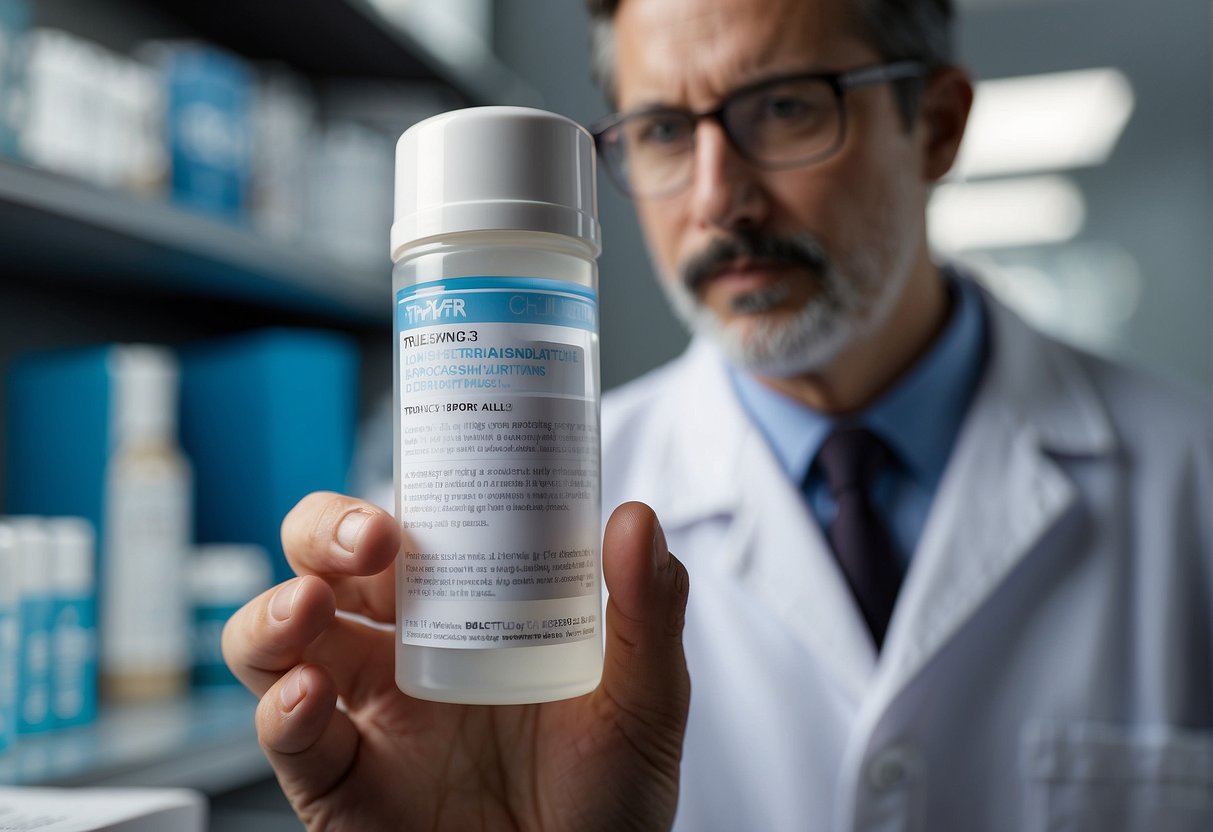
In evaluating the safety and regulatory status of triclosan, particularly in deodorants, we find that varying actions have been taken by government agencies to mitigate potential risks.
FDA Stance and Actions
The U.S. Food and Drug Administration (FDA) has been keenly focused on the safety and effectiveness of triclosan in consumer products. In particular, through their scientific reviews, they have determined that triclosan added to antibacterial soaps does not show any additional health benefits over plain soap and water. Consequently, in September 2016, the FDA issued a final rule which banned triclosan in over-the-counter consumer antiseptic wash products, citing the manufacturers failed to demonstrate the safety and effectiveness.
Triclosan Ban and Restrictions
Following the FDA’s rule, certain uses of triclosan have been limited or banned in the U.S., especially in hand soaps and body washes. However, triclosan is still allowed in other products like toothpaste, where it has been shown to prevent gingivitis. When it comes to triclosan in deodorants, the chemical is not prohibited, but manufacturers are required to justify their product labels regarding safety and effectiveness. Moreover, international regulatory approaches vary, with some countries having stricter regulations on triclosan use.
Health and Environmental Impact
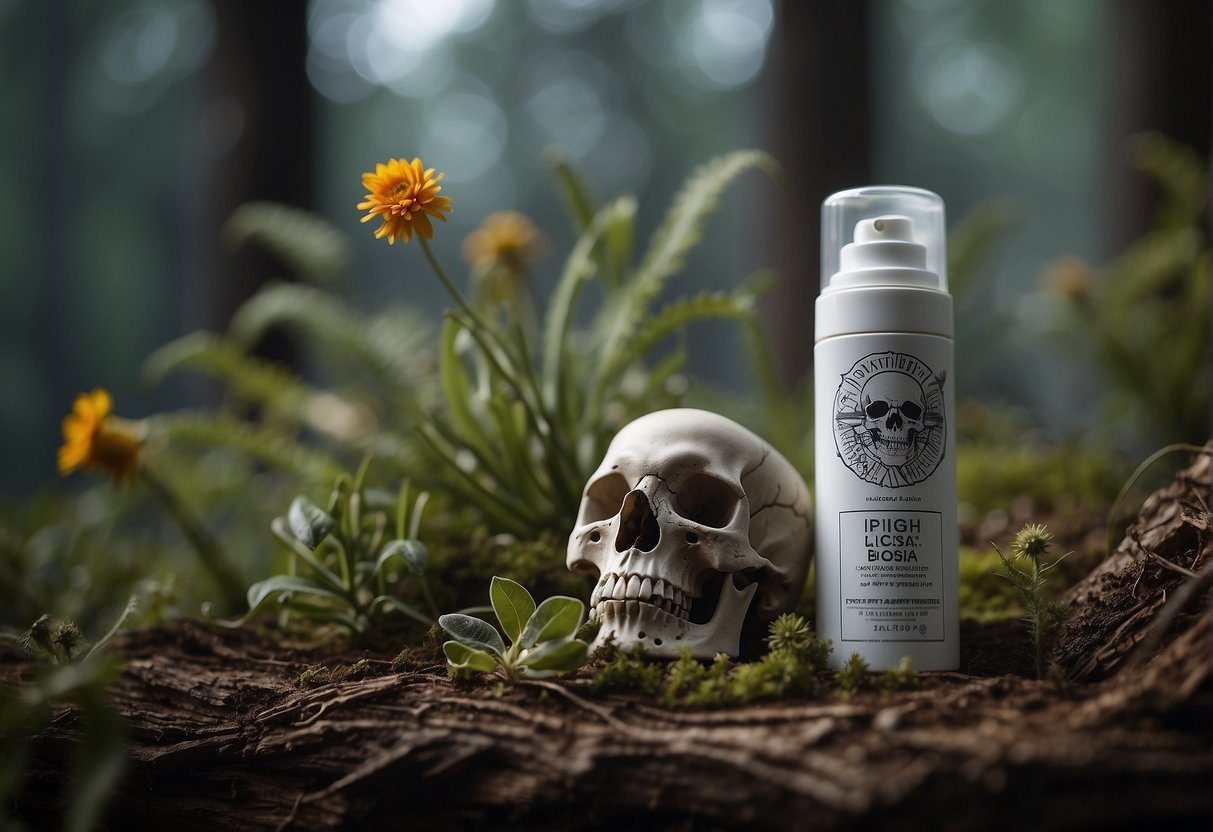
In this section, we will explore the specific concerns linked to the use of triclosan deodorant, ranging from potential health risks to negative environmental consequences.
Human Health Concerns
Triclosan is an endocrine-disrupting chemical known to interfere with thyroid hormone regulation. Prolonged exposure to triclosan can potentially affect thyroid function and hormones in humans. Its presence has been detected in human breast milk, indicating a significant level of exposure.
Environmental Consequences
Triclosan's environmental persistence is concerning, as it has been found in waterways and is known to be toxic to aquatic life. Accumulating in the environment, it contributes to the larger issue of pollution and represents a potential health risk to wildlife, which can also impact ecosystem balances and functions.
Antibiotic Resistance
Triclosan has been linked to the development of bacterial resistance, including antibiotic-resistant strains like MRSA. The misuse and overuse of triclosan might reduce the effectiveness of antibiotics, which is a critical challenge in healthcare and disease control. We understand the importance of preserving the efficacy of antibiotics by preventing unnecessary antibiotic resistance.
Comparison to Alternatives

In evaluating the safety and efficacy of triclosan deodorant, it's crucial to look at how it stacks up against more traditional alternatives like regular soap. We'll focus on the benefits of plain soap, ensuring we don't overlook the time-tested simplicity and effectiveness of such products.
Benefits of Regular Soap
When considering basic hygiene, we find that regular soap and water are highly effective at cleaning skin and reducing bacteria. Unlike triclosan deodorant, plain soap doesn’t come with the potential risks associated with triclosan. It's essential to acknowledge that:
- Plain Soap: Regular soap has a long history of safe use without the need for additional antibacterial agents. It is effective in removing dirt and reducing microbial presence through mechanical action.
- Safety Profile: Without controversial active ingredients, plain soap’s safety profile is appealing, especially when considering long-term, widespread use by various populations.
- Environmental Consideration: Our use of plain soap is less concerning for the environment, as there are no indications that it forms harmful byproducts like those associated with triclosan when exposed to water treatment processes or sunlight.
In the realm of oral care, fluoride toothpaste stands out as an alternative in preventing gingivitis and maintaining oral health. We've seen that the active ingredients in such toothpastes, including fluoride, have a targeted effect on oral bacteria, reinforcing tooth enamel without the broad-spectrum antibacterial properties of triclosan, thus limiting any related risks.
Consumer Choices and Considerations
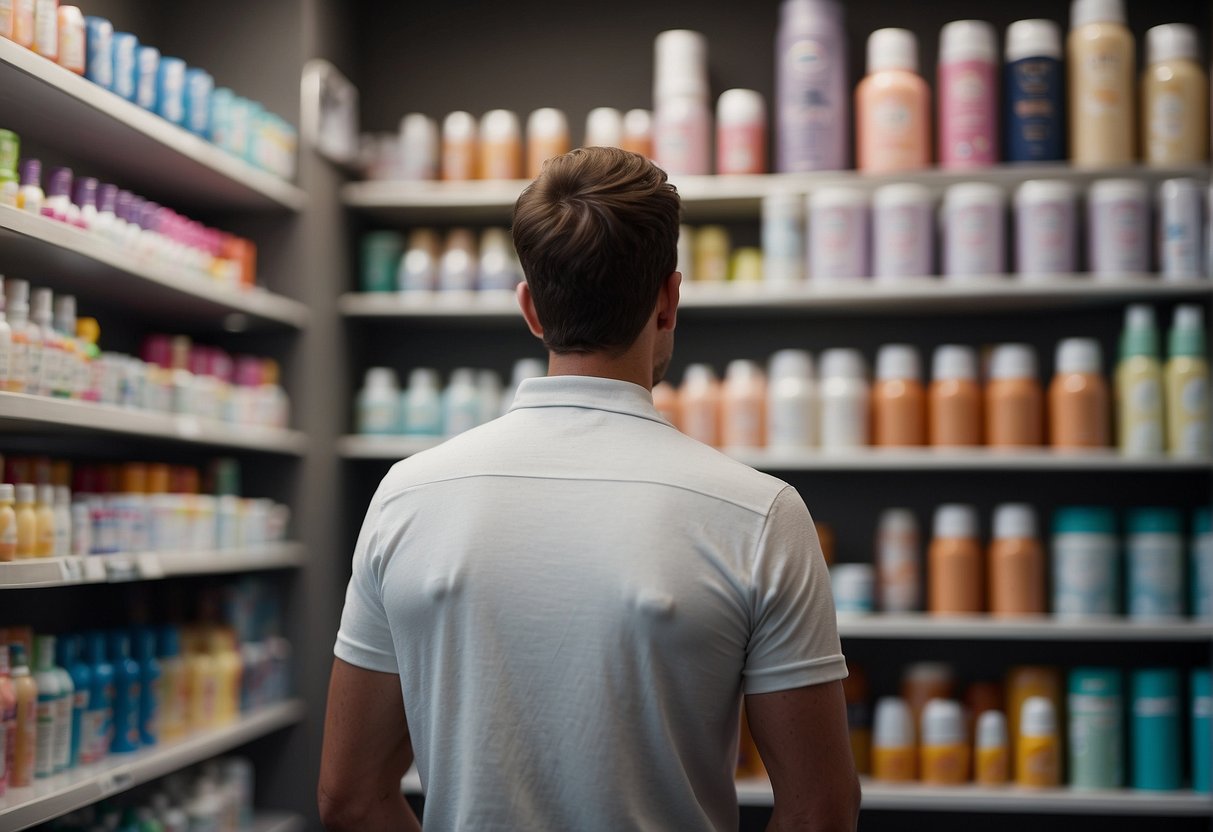
When selecting personal care items like deodorant, we must be vigilant about the ingredients they contain. Our focus here is on understanding product labels and making informed decisions on whether to use triclosan-containing products.
Identifying Triclosan-free Products
We can identify triclosan-free products by carefully reading the ingredient lists on labels. Triclosan is commonly found in a variety of consumer products, including soaps, deodorants, toothpaste, hand soaps, lotions, creams, and even cleaning products. To avoid it, we should look for products labeled as "triclosan-free" or check for triclosan's absence in the ingredient list. Here's a simple checklist to consider when scrutinizing labels:
- Look for "triclosan-free": Some manufacturers prominently label their products as free from this compound.
- Check the ingredients: Triclosan may not always be easily noticeable. Aside from the obvious "triclosan," it may be listed under other names like 5-chloro-2-(2,4-dichlorophenoxy)phenol.
Making Informed Decisions
Making informed decisions about the personal care products we use is crucial. With triclosan being linked to various health and environmental concerns, we should weigh the pros and cons of its presence in our everyday items. A wide array of products, such as mouthwash, facial cleansers, body sprays, shower curtains, and even mattresses, may contain triclosan because of its antimicrobial properties. However, alternatives exist:
- Non-triclosan antibacterials: We can opt for products that use other antibacterial agents that are perceived to be less harmful.
- Natural alternatives: Products that contain natural ingredients for combating bacteria can be effective without the potential risks linked to triclosan.
Frequently Asked Questions
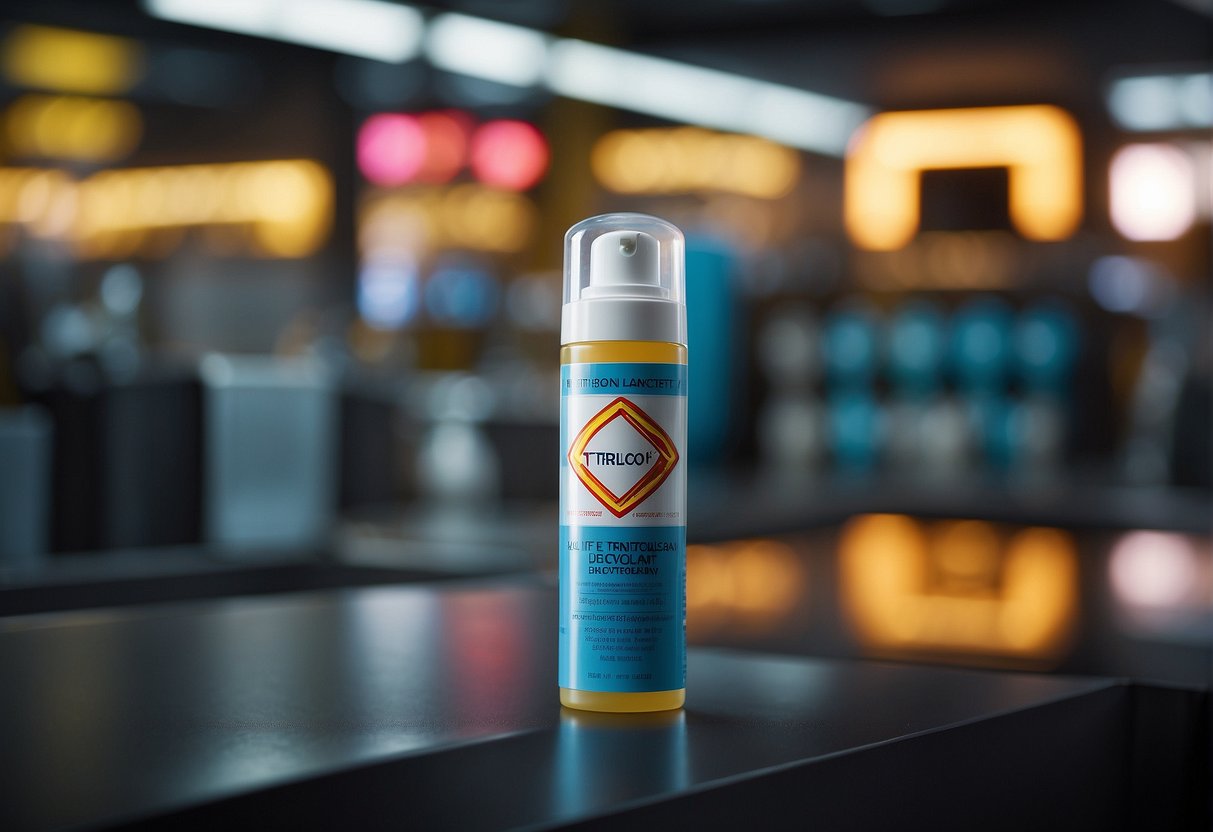
In this section, we address common concerns and provide clear information about the use of triclosan in deodorants and its potential effects on health.
What are the potential health risks associated with using deodorants that contain triclosan?
Research indicates that triclosan can be absorbed through the skin. Concerns have been raised about triclosan's potential endocrine-disrupting effects, which could potentially affect hormone function.
Can the use of triclosan in deodorants be linked to any long-term health effects?
Long-term health effects of triclosan exposure from deodorant use have not been fully established. However, studies suggest there could be a risk of hormonal and microbial imbalances with extended use.
Are there specific side effects that one should be aware of when using deodorants with triclosan?
Users of deodorants with triclosan may experience skin irritation. Also, considering triclosan's potential as an endocrine disruptor, potential side effects might include alterations in hormone regulation.
Which harmful chemicals, in addition to triclosan, should consumers avoid in deodorant products?
Consumers should be cautious of parabens, bisphenols, and benzophenone-3 as these chemicals are also associated with endocrine-disruptive properties and may pose similar risks as triclosan.
How do the properties of triclosan in deodorant interact with the human body?
Triclosan is an antibacterial agent that can penetrate the skin barrier. Its interaction with the body can lead to changes in hormone functions and contribute to antibiotic resistance.
What are the safer alternatives to deodorants that contain triclosan?
Safer alternatives include deodorants that are free from triclosan and other endocrine-disrupting chemicals. Look for products labeled as "paraben-free," "aluminum-free," and with natural ingredients.